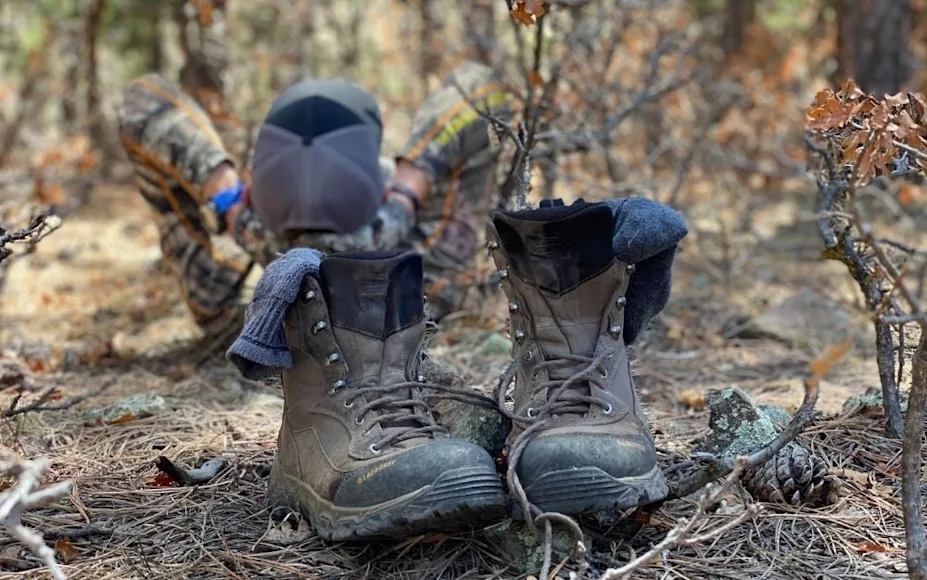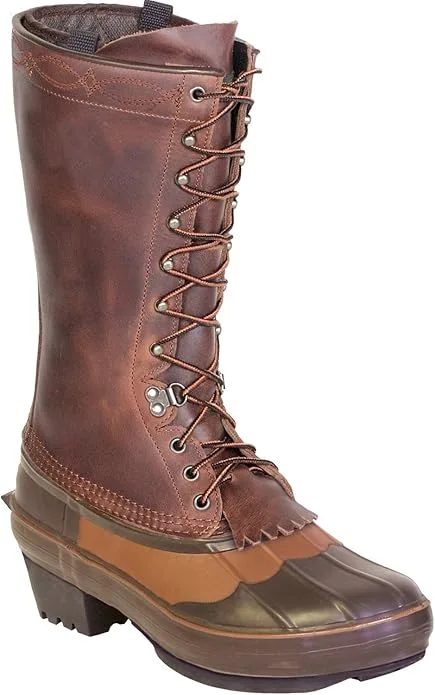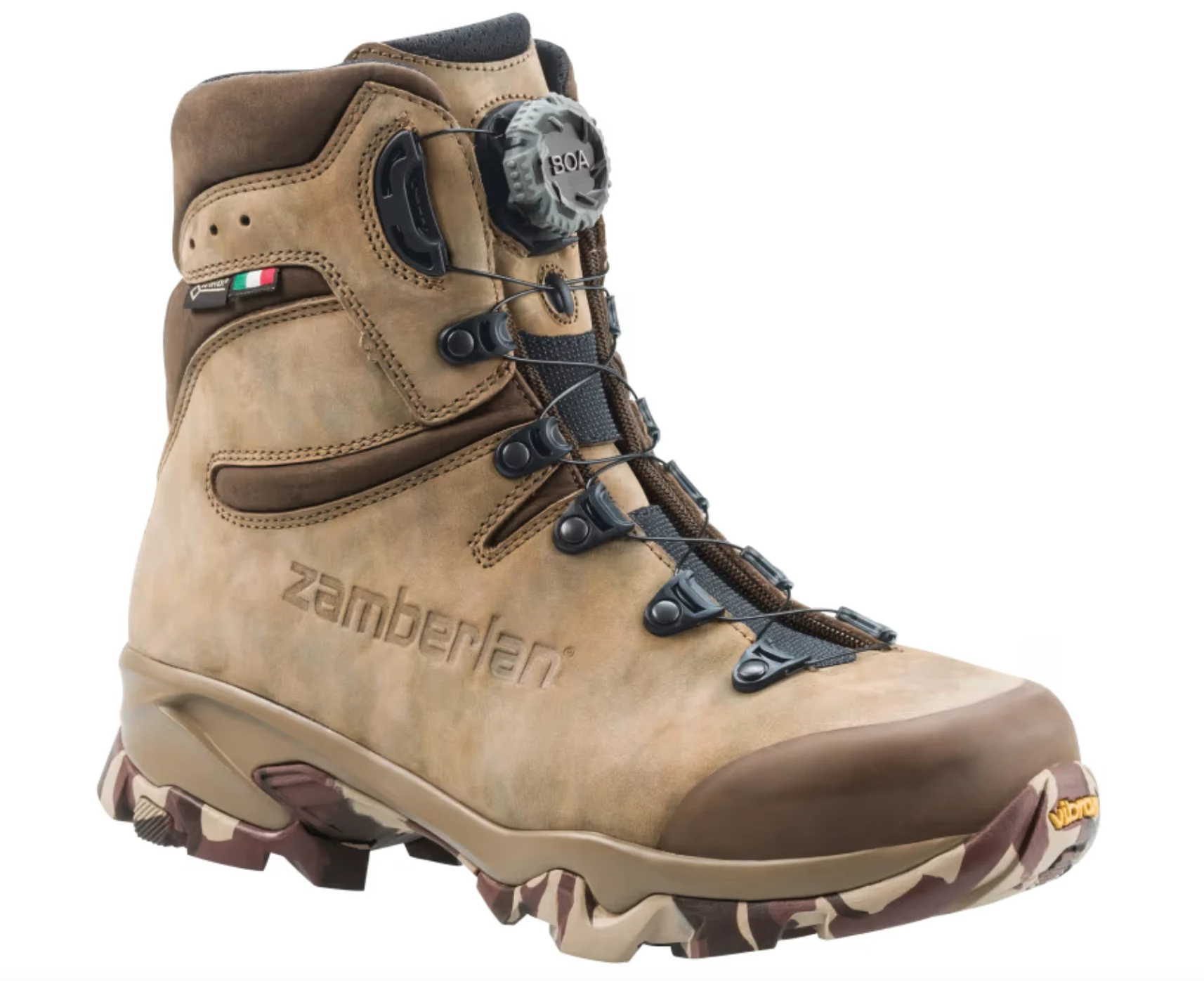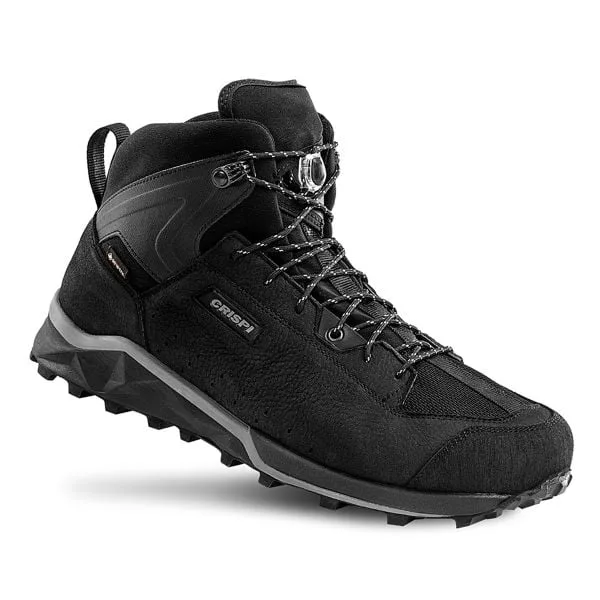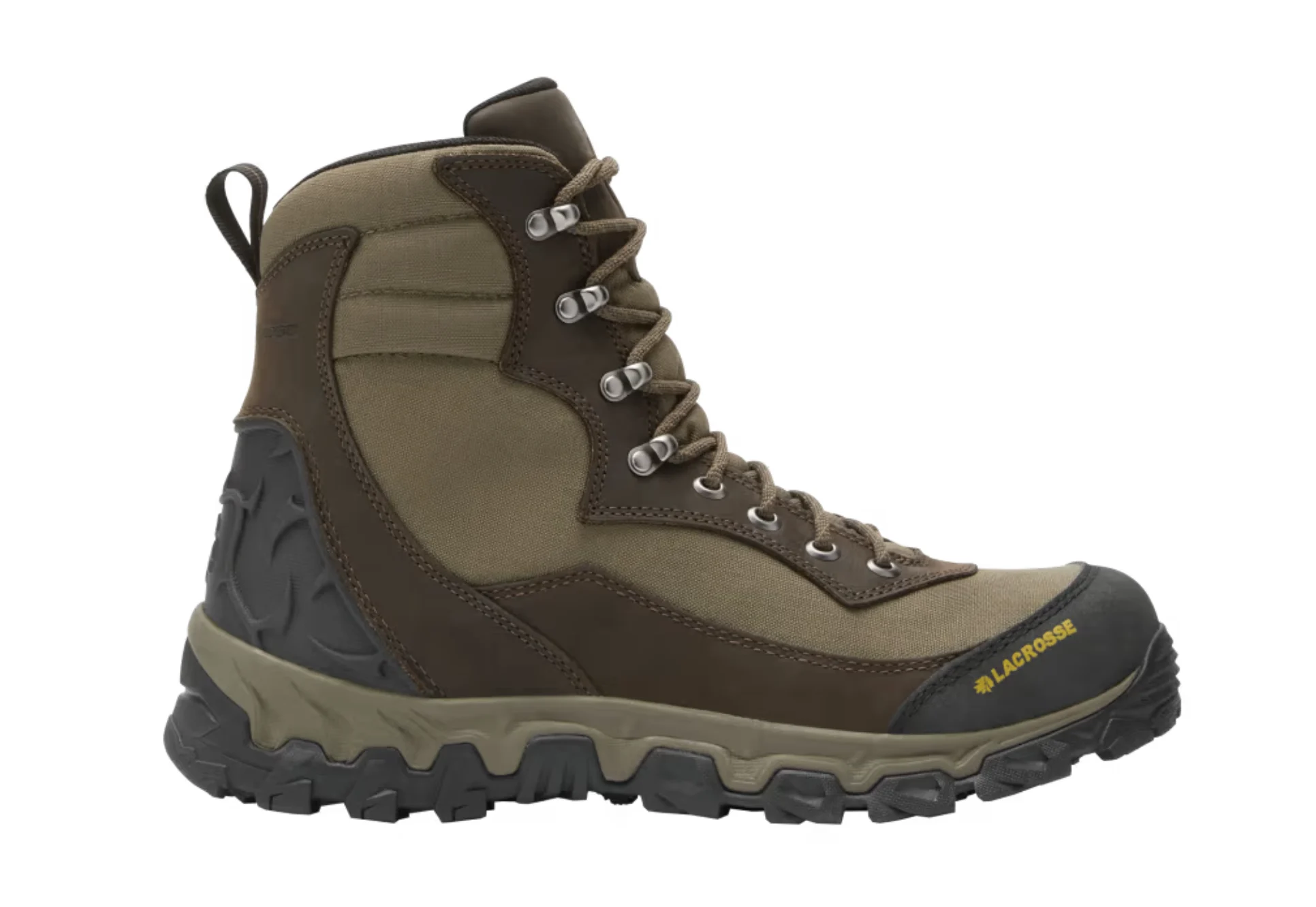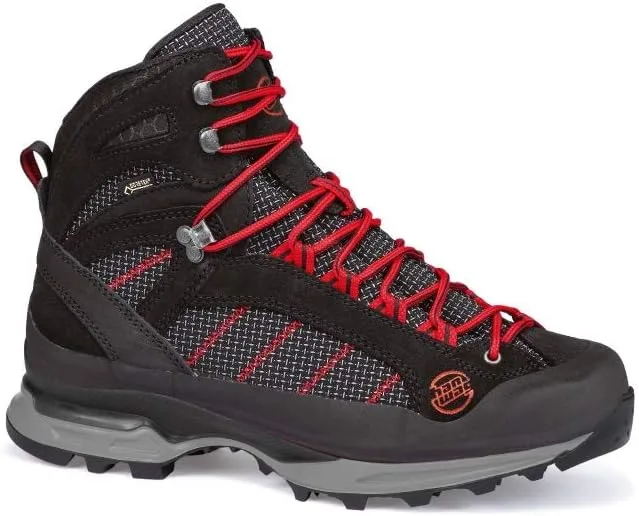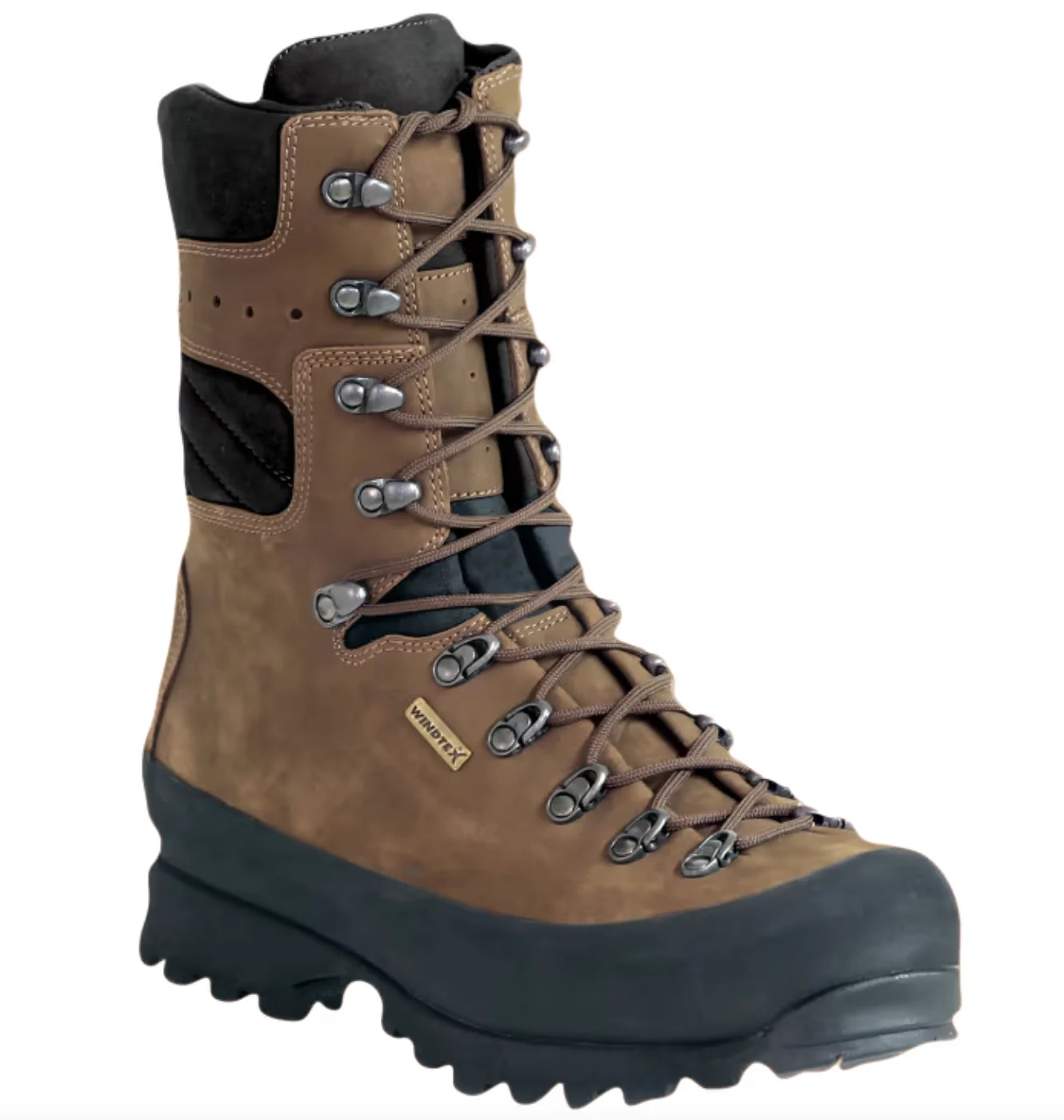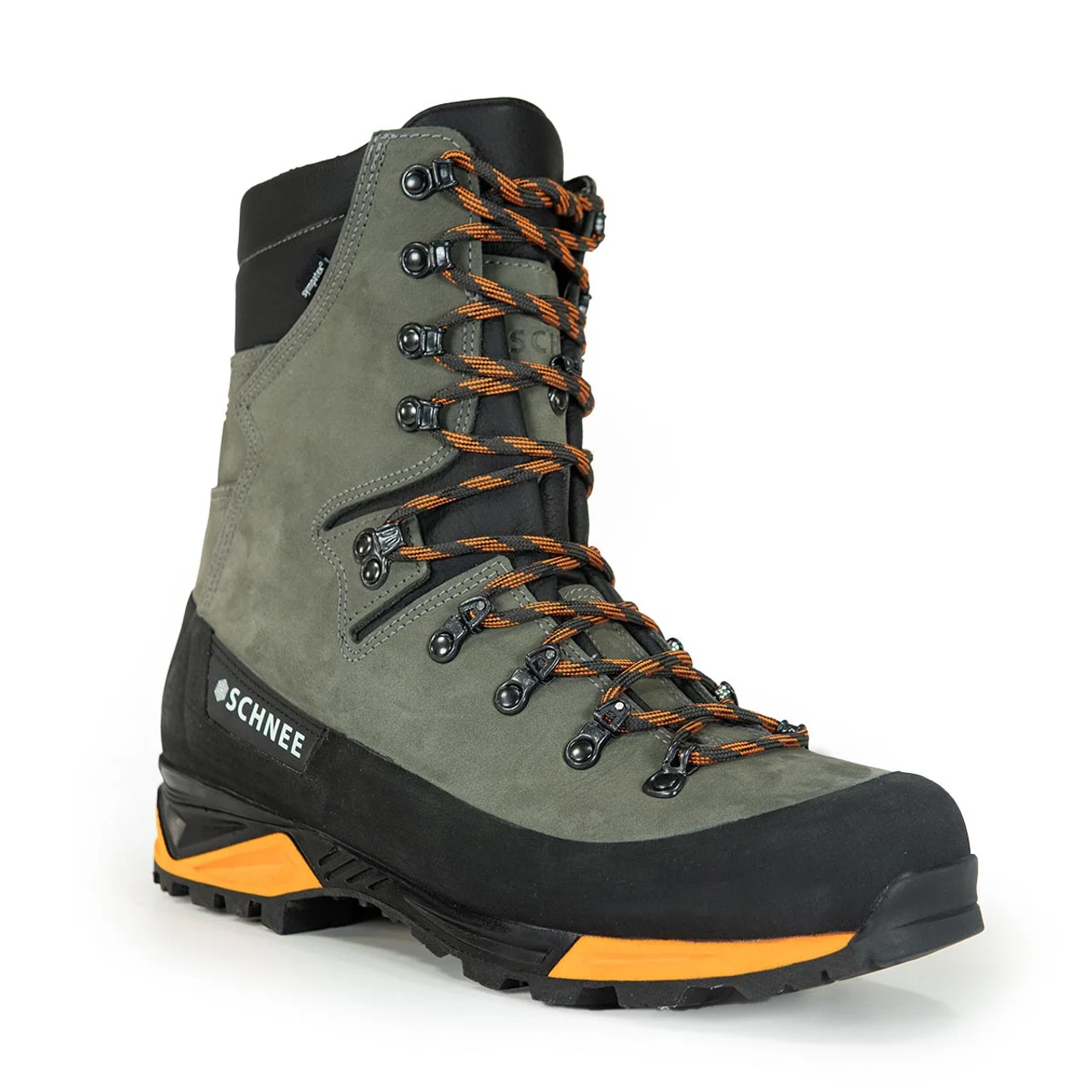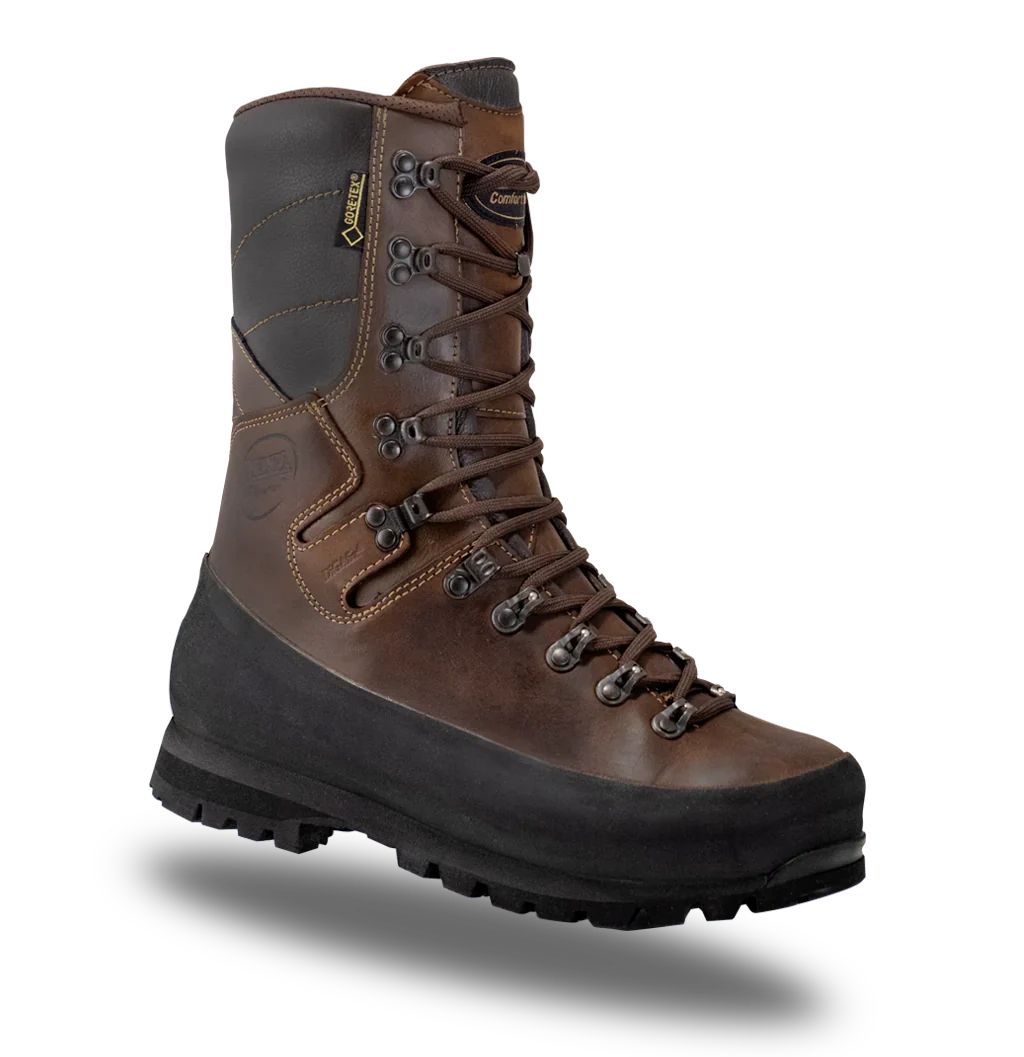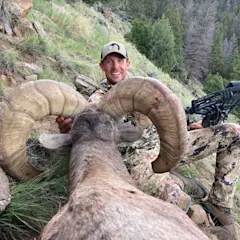A good pair of elk hunting boots can make or break your hunt. Hit the hills with a sub-par pair of boots that blisters your feet and your hunt will be over before it begins. Elk hunters will spend days fretting over pack weight, obsessing over the accuracy of their weapon, and drop a small fortune on calls. But their boot choice gets neglected. I’ve seen boots blister feet so bad during my elk tenure that the hunter had to spend three days in camp nursing them just to get back to his truck.
If this fall marks your maiden voyage West, or if you’ve hit the elk hills and realized your hunting boots were heavy, provided poor traction, and seemed to buckle under a heavy pack, take the time to adjust. The trick to finding the right pair of elk boots is to have an open mind, a reasonable budget, and pose questions to top-tier boot manufacturers. Having the right boot on your feet when you hit the Rockies may make the difference between notching a tag and going home empty-handed. At the very least, the right boot will keep you warm, dry, comfortable, and on the go.
Get the best elk hunting boots for your adventure, and your hunt will be more enjoyable and successful.
Best Overall: Kenetrek Mountain Extreme 400
Best for Low Country: Crispi Attiva Mid GTX
Best for High Country: Zamberlan Lynx MID GTX RR BOA
Best Budget: LaCrosse Lodestar
Best Lightweight: Salomon Quest 4 Gore-Tex
Best Newcomer: Hanwag Makra Trek GTX
Best for Cold Weather: Kenetrek Mountain Extreme 1000
Best Early-Season Elk Boot: Schnee Timberline
Best Pack Boots: Kenetrek Cowboy
Best Classic Boot: Meindl Comfort Fit Extreme
How We Picked the Best Elk Hunting Boots
Every boot recommended in this story has been worn and tested thoroughly in the elk woods. Boots were tested in different landscapes and weather conditions, and notes of each adventure—positives and negatives were recorded. I spend an immense amount of time each fall in the elk woods. I’ve experienced hunting with excellent boots as well as ones that aren’t worth a second look. Here is the criteria I based my selections on.
Comfort: Are the boots comfortable enough to be worn day after day in the elk woods?
Durability: Are the boots durable enough to withstand the tough terrain and conditions of elk hunting?
Weight: How heavy are the boots? How does the weight affect your style of hunting?
Construction: What materials are the boots made of? Are they waterproof?
Price: Are the boots worth what you are paying for them?

Best Elk Hunting Boots: Reviews & Recommendations
Best Overall: Kenetrek Mountain Extreme 400
Specs
400-gram Thinsulate insulation
Windtex waterproof membrane
Ruber sole guard
Pros
10-inches tall
Durability
Comfort
Cons
Expensive
Aggressive tread
If I had to pick one elk hunting boot for the rest of my days, it would be Kenetrek’s Moutain Extreme 400. My reason for going with the 400 over the non-insulated Mountain Extreme is we are going for an all-around elk boot, and there will be times when you’ll want some insulation. At 4.2 pounds, the boots are neither heavy nor light. The boots’ 10-inch height provides incredible ankle support and keeps debris and snow out. The upper is 2.8mm full-grain leather, and you won’t find a more exemplary overall boot build.
If you treat the boots with Kenetrek boot care products once a year, they will hold their full-waterproof build and last you for multiple seasons. Hunters should know the K-Talon outsole provides incredible traction; however, when the legs get tired, and you start dragging your feet, that traction can almost be too much. The boots will feel stiff, as any good mountain hiker should, but there is no break-in period. When I wear these boots with a quality pair of Kenetrek socks like the Ultimate Liner Lightweight Over-The-Calf-Socks,blisters and comfort are never a worry.
Best for Low Country: Crispi Attiva Mid GTX
Specs
Water repellent
Speed Lacing System
Elastoflex EVA midsole
Pros
Removable footbed
.95 pounds
Uninsulated
Cons
Water repellent upper
Speed Lacing System
If you haven’t slid your feet in a pair of Crispi’s, you should treat yourself, and the Attiva Mid GTX is some of the boot maker’s finest work. This boot was made for the on-the-go bowhunter that wants to hunt fast and light. The upper is leather/synthetic, and it’s incredibly comfortable. I am also a fan of the removable footbed. As good of circulation as these boots promote, you will still sweat during archery elk season, especially when hunting at lower elevations. Crispi’s Thermo Wire Technology provides strong ankle support, and I’ve packed plenty of meat while wearing these boots. The sole is solid—not too aggressive but not one that won’t grip the terrain. I am not a big fan of the speed lacing system. It hasn’t failed me, and it works fine, but I am a control freak and find I can get a just-right around-the-ankle fit if I can’t fully control the tension on the laces.
Best for High Country: Zamberlan Lynx MID GTX RR BOA
Specs
Rubber toebox rand
BOA lacing system
Gore-Tex
Pros
Vibram 3D Camo outsole
Resolable
Zamberlan Flex System
Cons
Expensive
A Cadillac for your feet, these boots feature an aggressive sole that provides traction in any terrain, and you’ll love the just-right tightness around the ankle that the BOA system offers. Gore-Tex married with a Hydrobloc Treatment on the Nubuck Leather makes these boots one hundred percent waterproof, and Zamberlan’s Flex System lets the upper portion of the boot break forward in a comfortable manner without taking away from lateral support—an essential feature when side-hilling. The addition of the rubber band around the toe areas increases boot longevity, and I love the total foot protection I get from this mid-high boot build. You don’t find many boots that offer a perfect blend of strength and weight, but Zamberlan has hit a home run in this department. When you do wear the soles down, and you will, as comfortable as these boots are to walk in, send them back to the manufacturer and get new soles put on.
Best Budget: LaCrosse Lodestar
Specs
Gore-Tex
DuraFit heel cup
Hexguard toe
Pros
Stability
Comfort
Durability
Cons
Break-in period
Lack of ankle support
When you think of LaCrosse, you likely envision rubber boots for whitetails, but this western boot build is good and will keep some coin in your wallet. The Lodestar boots are generally comfortable as long as you break them in, and I applaud the DuraFit Heel Cup, which locks the heel in place to prevent rubbing and lack of feel with the ground. I’ve used these boots from the high country to the low country for two years, and they’ve proved durable. The Vibram Lodestar Outsole has no problem grabbing the terrain, and the comfort of the Eva Midsole is evident when you have a load of meat and horns on your back. The boots are light and uninsulated. My only issue with them is the ankle support, which I feel is lacking. But for the money, you can’t go wrong with these 7-inch tall elk hunting boots.
Best Lightweight: Salomon Quest 4 Gore-Tex
Specs
Eva foam for shock
Gusseted tongue
4D advanced chassis
Pros
Mudguard
Traditional lacing system
OrthoLite sockliner
Cons
Lack of cushion
Ultra-aggressive sole
This lightweight boot has become a favorite for elk hunters. The Mud Contragrip grabs shale rock as well as it does loose dirt, and the full-grain Nubuck leather build boosts longevity. The boots are Gore-Tex lined, and Salomon went the extra mile and coated them with a special treatment that prevents the fabric from absorbing water.
Designed for technical trails and off-the-beaten-path ventures, I like the soft, breathable textile lining, and once your feet are inside, the foot feels well supported. Blisters and hotspots are never a worry, and this is a boot you can snag at the sporting goods store and head directly to the mountain with. The molded OrthoLite insole provides decent cushioning but conforms to your foot. I would like to see Salomon offer the boot in a model with a slightly less aggressive tread.
Best Newcomer: Hanwag Makra Trek GTX
Specs
Strength to weight ratio
Ghilly lacing
Codura build
Pros
Reinforced seams
Light sole construction
Ultra-comfortable
Cons
Height
Low build toward the ankle
I haven’t tested these boots personally, but I’ve talked with more than one elk hunter who has, and all have nothing but good things to say. The boots’ Cordura build with reinforced seams make them German-tank tough, and Hanwag used Gore-Tex, which is always a plus. From what I’ve been told, the boots are water-resistant and breathable, comfortable, and provide a great foot-to-ground feel. They aren’t fully waterproof, but still water resistant. The ghilly lacing in the toe area ensures custom tightness, and the tread pattern seems perfect for any elk terrain.
Best for Cold Weather: Kenetrek Mountain Extreme 1000
Specs
10-inches tall
7mm nylon midsoles
1,000g Thinsulate
Pros
Durable leather uppers
Windtex waterproof
Breathable
Cons
Sole is a tad too aggressive
Expensive
Yes, these boots are expensive, but I’ve walked hundreds of miles in them across the Rockies and have used them when riding horseback. Despite the thick sole and heavy insulation, the boots feel light are on the feet and provide a good feel on the ground. I appreciate the 7mm nylon midsoles, which provide exceptional support when toting a heavy pack, and the sole guard protects the lower leather from abrasion. The K-Talon outsole is a bit too aggressive for me, but I do like the traction I get. My only quarrel with the sole is when I’m tired and dragging my feet, I often catch the sole on the ground.
This is the best cold weather hunting boot for elk I’ve ever used. I’ve had my pair for four years, and if you take the time to apply Kenetrek boot care products, these stomps will last you a very long time. While these boots are built for cold weather, I’ve worn them with a liner sock multiple times during October and November and have been very comfortable.
Best Early-Season Elk Boot: Schnee Timberline
Specs
9 inches tall
3.7 pounds
Sizes: 7-14
Pros
Vibram Circuma outsole
Dual Density Ploy midsole
Flex-1 Chassis
Ultra-comfortable
Cons
Water will break them down if not waxed
Schnee has a long-standing reputation for making quality hunting boots. And the Timberline is one of their best early season options. For the most part, they are out-of-the-box ready, meaning you can put a few miles on them and then hit the elk woods. They are versatile for a wide range of hunting scenarios and will work just as well in the high country of the Rockies as they will in the sage-dappled plains and cedar-lined canyons. The lacing system is excellent, and these boots fit true to size. While they are waterproof, it is important to also wax the boots for maximum durability. I find these boots extremely comfortable and a top choice for archery season.
Best Pack Boots: Kenetrek Cowboy
Specs
5.6 pounds
400-gram Thinsulate Insulation
Sizes: 5-15
Removeable 6mm-thick three-part liner
Pros
3mm wool felt that insulates when damp
K-Talon Cowboy Outsole w/ stirrup rails
Hand-made rubber outsoles
Cons
Not ideal for walking and hiking; only riding
Many elk hunters, myself included, use horses to access hidden honey holes. And this is the best boot to wear if you plan to ride into elk country. Kenetrek crafted the Cowboy with safety (they pull quickly out of a stirrup), functionality, and durability in mind. The thick, six-ounce oil-tanned leather uppers hug the leg tightly, and the Snug-Fit lacing system utilizes several hooks and studs to help anchor the Power D-Ring lace to provide remarkable ankle support.
Not only does this boot slip in and out of stirrups like butter, preventing hang-ups and accidents, but the spur shelf keeps your spurs from sliding down on your heels. This is a lace-up riding boot, and users should know that while the K-Talon Cowboy Outsole design provides excellent grip and traction, these aren’t for hiking miles and miles. They are riding boots first and hiking boots second. The 400-gram Thinsulate Ultra Insulation keeps the feet warm to around 0 degrees, and the tall uppers provide solid protection.
Best Classic Boot: Meindl Comfort Fit Extreme
Specs
11-inches tall
4.25 pounds
Sizes: 7-14
Pros
EVA midsole
Waxed full-grain uppers
Waterproof
Rubber rands
Cons
Price
Break-in period
If you’re a high country wanderer that loves the challenge of climbing high and hunting bulls at Timberline, these boots are for you. They were designed for sheep and goat hunters, but work just as well in the elk woods. A tall, lightweight, ankle-supporting hunting boot, the Comfort Fit Extreme’s soft foam pads and MFS Vakuum foam panels are pillows for the feet. I also cheer the Vibram Multigrip outsoles that perform flawlessly in any terrain.
The tread is aggressive, and they offer remarkable support from your big toe up to your Achilles. Once you break these boots in, their longevity is impressive, and they will last multiple seasons in the field. If you have ankle issues, you can’t beat the 11-inch shafts that protect the ankles from rolling and twisting, no matter how bad the terrain.

What to Consider When Choosing Elk Boots
Like most gear items, picking the right boot is all about matching that boot to the terrain and weather conditions you will likely experience on your elk hunt. Combine this with the right materials and construction and you will have your ideal elk hunting boot. Here is a closer look at the important factors that go into my selections.
Terrain
Make sure you have a solid grasp of the terrain you’ll be hunting, as knowing the terrain will help you understand what style of elk boot is best for you. Last September, I was hunting isolated timber pockets just below the timberline. I spent my days navigating shale rock shoots, boulder fields covered in snow, and wet, alpine meadows. This hunt demanded a boot with serious traction, warmth, and a hundred percent waterproof build. I was living out of a backpack, which meant toting 52 pounds on my shoulders and waist each day, and it required my boots to have solid uppers and provide excellent support.
In October, while chasing elk near my southeast Colorado home with my .280 Ackley Imp., I made a boot switch. Why? I was hunting dry, cedar-sprinkled country void of rock. The dirt was soft and covered with ankle-high prairie grass. I opted for a 7-inch tall, lightweight boot that sported a synthetic and leather build. The tread wasn’t nearly as aggressive, and because I was walking short distances before returning to my truck, the boots’ load-bearing nature wasn’t a concern.
Weather
Weather can be unpredictable, but you will know the time you plan to hunt and the historical trends of conditions. If colder temperatures and snow are probable, you’ll want a boot with no less than 600g of Thinsulate insulation, and it will need to have a Gore-Tex or some other form of waterproof technology. Nothing is worse than cold, wet feet. On the flip side, if you’re chasing bulls in Utah in August, insulation will make your feet sweat, dampen your socks, and lead to blisters and odor. Make sure to match your hunting conditions.
Materials and Construction
The right boots are tailored to specific conditions. This means that terrain and weather will also impact the constriction and design of your boots. High country hunts will require studier boots with more support and ruggedness. This most likely means heavy materials and a solid build. Low-country hunts might translate to lightweight boots with less protection. The boot materials are going to impact weight, support, toughness, mobility, comfort, and special features. Consider what your boot is made out of and how the design will affect your hunt.
If you’re not hitting the backcountry for elk, you can check out our top picks for the best hiking boots
to keep you comfortable on the trail.
FAQs
Q: What boots do I wear for elk hunting?
Choosing a boot is very personal, and I recommend not worrying about what anybody else wears and finding the exact fit for you that matches your style of elk hunting. If I had to pick, though, it would be anything made by Kenetrek.
Q: Do elk boots need to be waterproof?
Yes. Of course, there are some dry locales in Arizona, New Mexico, and Nevada where having a waterproof boot isn’t a staple, but it sure doesn’t hurt. Mountain elk hunters can expect rain showers almost every afternoon, and I’ve yet to go on an elk adventure where I didn’t cross multiple streams and rivers each day. You can’t overlook those damp morning mountain meadows, either. One stroll through calf-high grass and your feet can be soaked before your day even gets started.
Q: How heavy should elk hunting boots be?
My opinion is the lighter, the better. However, most of my elk hunts are during archery season. The weather typically isn’t brutal, and I’m walking miles and miles each day. Late-season elk hunters shouldn’t worry about weight, especially those that hunt areas where snow is required to push herds out of the high country. These hunts are more sit-and-wait, and warmth is more important than weight.
Best Elk Hunting Boots: Final Thoughts
Don’t be the elk hunter who isn’t afraid to drop money on a top-tier flagship bow and neglects to purchase a solid pair of boots. Nothing in the elk woods is more important than your feet. If you can’t walk, you can’t go after a bull. Elk hunting is hard enough, and the last thing you want is to be fighting wet feet dotted with blisters. Find a boot that provides you with a great fit, feel, and confidence—spend the money, and add it to your elk arsenal.
Why Trust Us
For more than 125 years, Field & Stream has been providing readers with honest and authentic coverage of outdoor gear. Our writers and editors eat, sleep, and breathe the outdoors, and that passion comes through in our product reviews. You can count on F&S to keep you up to date on the best new gear. And when we write about a product—whether it’s a bass lure or a backpack—we cover the good and the bad, so you know exactly what to expect before you decide to make a purchase.

